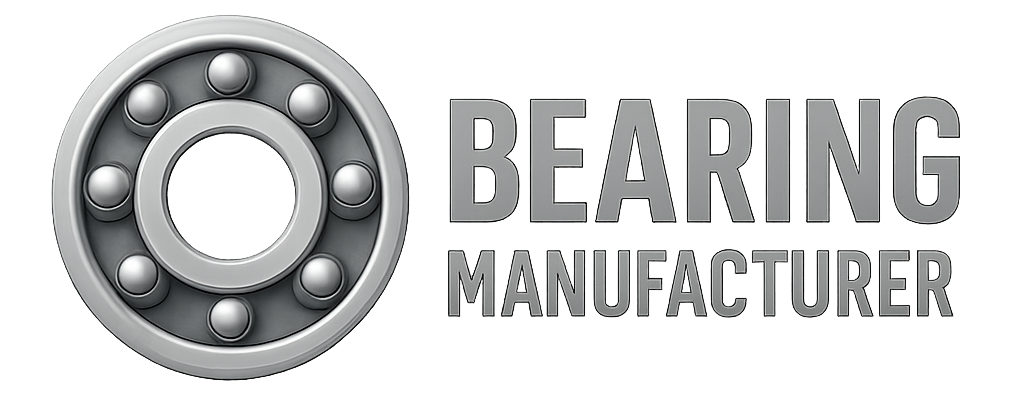In modern industrial machinery, efficiency, precision, and durability are critical. Magnetic bearings represent a cutting-edge alternative to traditional mechanical bearings, enabling frictionless rotation by suspending the rotor without physical contact. This article explores their working principles, components, types, advantages, limitations, and key industrial applications.
What Is a Magnetic Bearing?
A magnetic bearing is a type of bearing that uses magnetic fields to levitate and stabilize a rotating shaft, eliminating direct physical contact between moving parts.
Because there is no friction between surfaces, magnetic bearings can operate at extremely high speeds—often higher than any conventional bearing type. They also eliminate the need for lubrication, making them suitable for oil-free and contamination-sensitive environments such as cleanrooms and vacuum systems.
Main Components of a Magnetic Bearing
A magnetic bearing system typically consists of:
-
Electromagnets – Create magnetic fields to lift and stabilize the rotor.
-
Position Sensors – Continuously monitor the rotor’s location.
-
Control System – A closed-loop system that adjusts electromagnet strength in real time for stable rotation.
-
Rotor – The rotating shaft or component kept suspended by magnetic forces.
-
Stator – The stationary housing containing electromagnets and sensors.
-
Auxiliary Bearings – Mechanical backup supports that protect the rotor during power loss or system faults.
Types of Magnetic Bearings
1. Active Magnetic Bearings (AMBs)
-
Use electromagnets controlled by a feedback system.
-
Can dynamically adjust to rotor position changes, correcting imbalance and reducing vibration.
-
Offer zero wear, low maintenance, and extremely high-speed capabilities.
-
Require a constant power supply and advanced control electronics.
2. Passive Magnetic Bearings
-
Use permanent magnets for levitation without active control.
-
No power consumption, but less adaptable to load variations.
-
Often combined with AMBs for hybrid systems where permanent magnets handle static load and AMBs manage dynamic adjustments.
How Magnetic Bearings Work
Core Principle
When an electromagnet is energized, it generates a magnetic flux that attracts ferrous materials. By precisely controlling this force, a rotor can be suspended in mid-air.
Magnetic Levitation
In active systems, the magnetic force counteracts gravity to keep the rotor floating. However, without active regulation, the rotor could be pulled into contact due to magnetic attraction’s negative stiffness—the tendency for force to increase as the gap decreases.
Control and Stabilization
-
Sensors detect minute changes in rotor position.
-
Controller adjusts the current to electromagnets in milliseconds, keeping the rotor centered.
-
Eddy currents generated in the rotor can aid in stability by creating opposing magnetic fields (Lenz’s Law effect).
The result: frictionless rotation, minimal vibration, and extended system lifespan.
Pros and Cons of Magnetic Bearings
Advantages
-
Zero Mechanical Contact → No wear, longer life.
-
No Lubrication Needed → Ideal for clean or vacuum environments.
-
High-Speed Capability → Suitable for ultra-high RPM machinery.
-
Low Maintenance → Fewer service interruptions.
Limitations
-
High Initial Cost → More expensive than conventional bearings.
-
Continuous Power Requirement → Vulnerable to outages without backup.
-
Complex Technology → Requires specialized installation and maintenance skills.
-
Backup Bearings Needed → Safety support in case of power/control failure.
Key Industrial Applications
Magnetic bearings are widely used in:
-
Gas & Steam Turbines – For power plants and energy generation.
-
Centrifugal Compressors & Pumps – Oil-free and low-vibration operation.
-
Maglev Trains – High-speed, smooth transport.
-
Medical Imaging Systems (MRI) – Non-contact, noise-free rotation.
-
Aerospace Equipment – Precision and reliability in harsh conditions.
-
High-Speed Motors & Blowers – Improved efficiency and durability.
-
Flywheel Energy Storage Systems – Low-loss energy retention.
Conclusion
Magnetic bearings combine electromagnetism, precision control, and modern engineering to achieve unmatched performance in high-speed, oil-free, and maintenance-sensitive applications. While they involve a higher upfront investment, their longevity, efficiency, and reliability make them a strategic choice for industries requiring top-tier performance.
Explore More Bearing Solutions
At Bearing Maker, we provide a full range of solutions—from magnetic bearings to ball bearings, roller bearings, thrust bearings, stainless steel bearings, ceramic bearings, and custom designs tailored to your exact needs.
Discover precision, durability, and innovation with one of China’s top bearing manufacturers.
